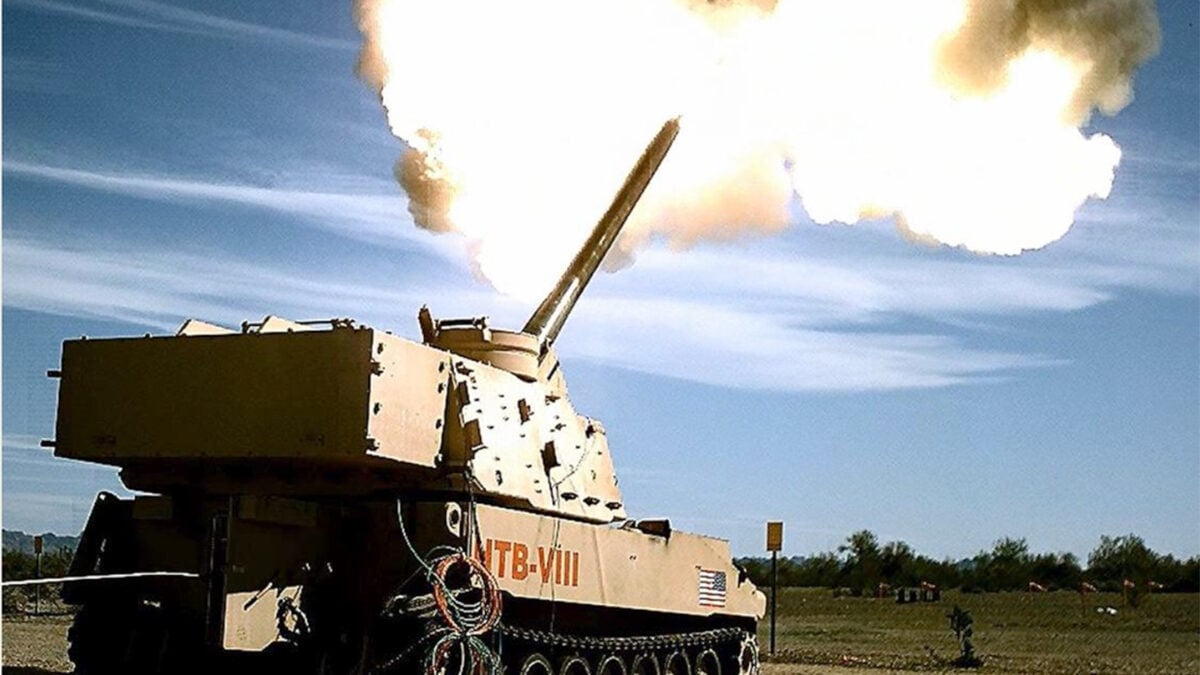
Extended Range Cannon Artillery, or ERCA, will be an improvement to the latest version of the Paladin self-propelled howitzer.(Edward Lopez / Picatinny Arsenal)
WASHINGTON: Free of long-standing treaty constraints and with a new heavy focus on long-range precision fires, the US Army has officially reactivated its European Theater Fires Command as the service prepares to introduce new far-reaching fires capabilities.
The reborn 56th Artillery Command will “plan and coordinate the employment of multi-domain fires and effects” to support US Army Europe and Africa, as well as any combined joint force land component command, according to a service press release. The unit’s primary focus will be coordinating long-range missile fires far beyond the distances the Army has fired in recent decades.
The formal announcement from US Army Europe and Africa came Wednesday, as concerns peaked about an apparent Russian military increase along its Ukrainian border. Speaking at a conference in Washington Wednesday, chairman of the Joint Chiefs of Staff Gen. Mark Milley said that the build up was “significant,” but “nothing overly aggressive.”
“We’ve seen this before,” he said, according to Voice of America.
The 56th Artillery Command was previously activated between 1986 to 1991, but was shuttered after the now-obsolete Intermediate-Range Nuclear Forces treaty was signed, which barred the development of missiles that could fly between 500 to 5,500 km (or 310 to 3,417 miles). The Trump administration exited the treaty in 2019 citing continuous violations by Russia.
“The reactivation of the 56th Artillery Command will provide U.S. Army Europe and Africa with significant capabilities in multi-domain operations” said Maj. Gen. Stephen J. Maranian, commanding general of the 56th Artillery Command, in a statement. “It will further enable the synchronization of joint and multinational fires and effects, and employment of future long range surface to surface fires across the U.S. Army Europe and Africa area of responsibility.”
The service is in the midst of rebuilding its long-range fires portfolio as it pivots to confront near-peer threats in China and Russia. The service is developing the Precision Strike Missile to fly up to 499km, a number set before the exit from the INF; its Mid-Range Capability will fly 1,000 miles and the Long Range Hypersonic Weapon aims for 1,725 miles. All three of those capabilities are supposed to be fielded as prototypes in 2023.
The new command is part of the service’s AimPoint initiative, which is evaluating the Army’s force structure to enable multi-domain operations. The theater commands will support the regional headquarters, which the Army has previously said does not have the staff to plan large-scale bombings, gather intelligence in peacetime and adequately coordinate fires with allies. (The 56th is also one of two new force structure efforts to enable mutli-domain operations, the other being the Army’s Europe-based Multi-Domain Task Force.)
Last year, Lt. Gen. Eric Wesley, the leader of Army Futures Command’s Futures and Concepts Center, told reporters that the higher echelons of the Army’s formation will have a larger role to play in the future rather than the brigade-centric warfare that counter-insurgency operations required.
“If you look at echelons above brigade, what we’re having to do is build out our capacity to fight large-scale, campaign-quality combat,” he said. “Those echelons we have mortgaged a bit in the last 20 or 30 years because our BCTs [Brigade Combat Teams] were so powerful relative to our opponent. [Today], because we are being contested in all domains and our two peer competitors are investing in their militaries, we have to build back some of that campaign quality at echelon.”
Brad Bowman, senior director of the Center on Military and Political Power at the Foundation for Defense of Democracies, lauded the reactivation.
“In a future European conflict scenario in eastern Europe, the Army will be fighting as part of a joint and multi-national force. That means the Army must be able to work seamlessly with other U.S. services and with NATO allies,” he said. “The 56th Artillery Command can help make that happen.”
Move over FARA: General Atomics pitching new Gray Eagle version for armed scout mission
General Atomics will also showcase its Mojave demonstrator for the first time during the Army Aviation Association of America conference in Denver, a company spokesman said.


























